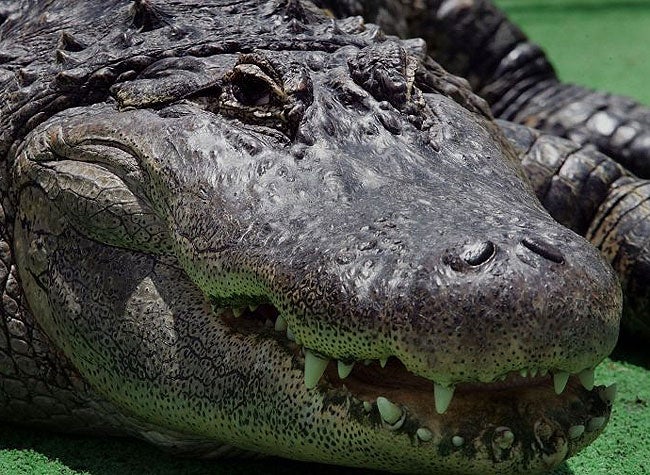How long do slugs live, and how strong is a crocodile’s bite?
We explore the curious questions that science can answer

How long do slugs live?
The life expectancy of slugs varies greatly, depending on type, size and so on. But in general, very small slugs live about six months, while very large slugs can live for between eight and 10 years.
Is it true that wombats produce square faeces? And which way do their pouches open?
Wombats do, indeed, produce cuboid faecal pellets. They are solitary creatures that live in burrows in Australia, and come out at night to feed mainly on grasses. They mark their territory with splashes of urine – and their strangely shaped faecal pellets. Their pouches, along with those of other marsupials that crawl along the ground, open in the opposite direction to that of a kangaroo: if the wombat was to stand on its back legs, the pouch would open downwards.
How many legs do centipedes and millipedes have?
Centipedes have one pair of legs per body segment and millipedes have two pairs per body segment. As the number of body segments varies, it is impossible to give a definite answer. But it’s not 100 and 1,000.
Why do moths fly towards light?
Because they think it’s the moon. Moths are used to navigating by the light of the moon – they fly keeping the moon on one side. When a bright, artificial light is present, they try to do the same thing but to keep it in a fixed position they end up flying round in circles. The brightness of the light disorientates them and their orbits get smaller and smaller until eventually they hit the light.
Why were there such large dinosaurs and mammals years ago?
Organisms tend to become larger as their lineages evolve; this is sometimes known as “Cope’s rule”. Many factors may interact to influence evolutionary trends in body size. For the largest dinosaurs, increase in size is likely to be correlated with exploiting a new food source: the sauropods literally grew taller with the trees on which they fed. And one way for a carnivore to tackle large prey is to grow large, too. It may sound simplistic, but there was nothing to prevent the sauropods (or mammals) from growing large – except, finally, sheer physical constraints.
The reverse is also true. As far as dwarfing is concerned, reduced habitat area is a driving force. Examples are island faunas of dinosaurs (Romania) or Tertiary mammals (Mediterranean islands) where the animals have become smaller as an adaptation to living in restricted areas. It is unlikely that giant lineages will evolve again – we humans have too much influence on habitat and ecology.
Do any animals other than humans cry to show emotion?
Most scientists think humans are the only animals that cry to show emotion. While the eyes of certain animals (dogs, chimps, dolphins, etc), do water, this does not constitute crying. We don’t really know why humans cry either; although it definitely elicits a sympathy response from most people; and there is a difference in the types of proteins present in the water of tears to those present when eyes water normally.
How strong is a crocodile's bite?
The muscles that close a crocodile’s jaws are very strong. They crush turtle shells with ease, and a large salt-water crocodile holding a pig’s head in its jaws can crush the skull from a “standing start”. But the muscles involved in opening the jaws aren’t so strong. A rubber band around the snout is enough to prevent a crocodile two metres long from opening its mouth.
Join our commenting forum
Join thought-provoking conversations, follow other Independent readers and see their replies
Comments